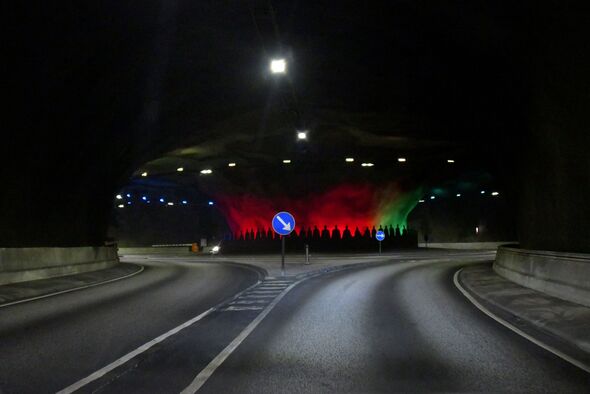Journeys that once took over an hour have been slashed to a mere 15 minutes, thanks to the construction of remarkable new tunnels linking the Faroe Islands in the North Sea.
Previously, islanders had to rely on boat travel, which could take up to half a day depending on the unpredictable weather in a region often described as a place where you can experience all four seasons in 24 hours.
Today, the Faroe Islands, a self-governing territory under Denmark, are home to just over 50,000 people scattered across 17 habitable islands. The entire population could comfortably fit inside a football stadium, and interestingly, there are around 20,000 more sheep than humans.
The ambitious tunnelling project began back in the 1960s, with 20 tunnels constructed over the past six decades with a total estimated cost of at least £535 million.
Now, the islands boast over 31 miles of road tunnels for its small population of 53,000 roughly equating to one metre of tunnel per resident.
The Eysturoy tunnel, inaugurated in December 2020, represents the largest investment in the project, with an eye-watering estimated cost of £300m. This 11-kilometre tunnel, connecting Streymoy (where the capital is located) with Eysturoy, took approximately 4 years to complete.
But the price tag seems justified given the engineering feat it represents. Not only is the tunnel the second longest of its kind globally, but the eight-minute drive through it offers a mesmerising visual spectacle.
It features the world’s first subsea roundabout, dubbed the “jellyfish roundabout”. Situated 72 metres below sea level, drivers can marvel at a towering pillar of illuminated natural rock, a remnant of the explosive construction process.
An 80-metre steel sculpture of figures holding hands encircles the entrance, embodying a powerful message.
“The figures are walking from darkness into the light,” explained Trondur Patursson, the Faroese artist behind the creation, “And they symbolise the very Faroese idea that by joining hands and working together we achieve great things”, he shared with the Guardian.
To complement the journey, a special radio station plays Faroese music, curated to enhance the driving experience.
The tunnel sees thousands of vehicles pass through daily, each paying around £25. This revenue is reinvested into further construction, maintenance, and about 14 upcoming projects.
December 2023 saw the inauguration of the Sandoy Tunnel, a second subsea passage connecting the village of Sandoy to the main infrastructure, slashing a 64-minute commute to just 16 minutes and claiming the title of the world’s longest car traffic subsea tunnel.
Both tunnels were carved out using the drill and blast technique, with concrete sprayed onto the rocks for waterproofing. A sophisticated system of gates, pumps, and pipes channels any rain or surface water away, eventually discharging it into the adjacent fjord.
The Faroe Islands’ rapid and efficient construction of a tunnel network and its transport links have left other island nations, including its closest neighbour, the Shetland Islands, green with envy. North Isles MP Alistair Carmichael admitted in December 2023 that while tunnel links aren’t a “cure-all” solution, “if we learn from our Northern neighbours in the Faroe Islands and create a credible plan for their implementation, then the results could be transformative for Shetland”.
Teitur Samuelsen, CEO of the Faroese tunnelling company P/F Eystur- og Sandoyartunlar, explained: “We are a small country, a small society where decisions can be taken quite quickly. That’s one reason why we can do projects like this.”
